If you ask the trees in Ramsey Park which blooms announce a Rio Grande Valley spring, the Texas huisache, Acacia farnesiana, will say they are the traditional harbingers of spring.
Pink Mint, Stachys drummondii, also pushing out their tiny pink blooms typically announce spring from the lower realm of native plants.
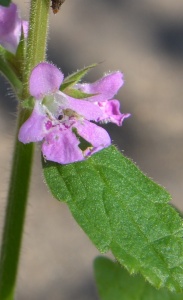
In the real world, say for instance, in your own back yard, a number of different plants are beginning to announce spring, some not as thrilling to find as huisache and pink mint.
In several areas of our spread, tomato, Solanum lycopersicum, already has me drooling for fried green tomatoes. Unfortunately, the ¾ inch round berries aren’t going to slice up, hold breading and sizzle in a frying pan. They are good, though, eaten plucked from the vine when ripe. Dr. Richardson and Ken King’s book, Plants of Deep South Texas, (PDST) page 401 describes this particular species.
Tiny yellow blooms look just like any cultivated tomato plant you might buy from one of the big box stores. Solanum lycopersicum is not a native plant. It was introduced from South America and has become naturalized. (See January 2017 blog for botanical terminology.) This tomato plant will take over large areas if left on its own. Fortunately it is tremendously easy to clear away if you find birds and wind have blessed you with an overabundance.
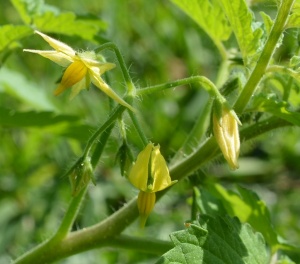
Texas nightshade, Solanum triquetrum, (PDST page 403) is something you might see popping up in unwanted areas of your yard. It is native. The pollinated flowers will turn into red berries that several species of birds eat.
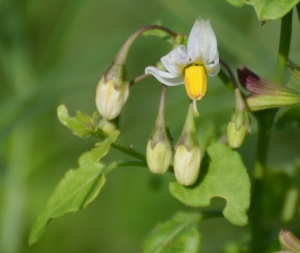
The potato tree, Solanum erianthum, also native, is starting to bloom. (PDST page 401) Its leaves and fruit are edible, if you’re a bird or bug.
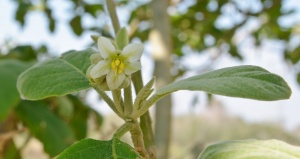
If you haven’t paid attention to the scientific names of these last three plants, take a look. They are all related. They belong to the family Solanaceae (or nightshade), as do a number of other interesting plants including the tomatoes you buy in the store. If you’ve time for a scientifically botanical read, check out Solanaceae in Wikipedia.
Something else you may be seeing more than you like, Asiatic hawkweed, Youngia japonica, PDST page 137. These are really sweet the first year, and then you realize how utterly prolific they are. This is not a native plant. The leaves are a pretty, bright green and would look appetizing in a salad. Then a tall, thin stem shoots up and a heavy cluster of yellow flowers bloom in the morning, closing by afternoon. What you don’t expect are the hundreds of little puff balls like miniature dandelions that scatter in the wind. The only saving grace is that they pull up easily. Better would have been to drag the lawn mower out sooner — last year — before they went to seed.
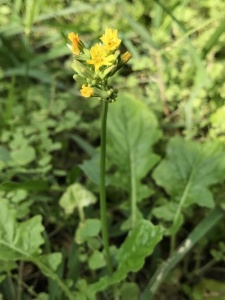
Another prolific reproducer proliferating the spring landscape is spiny sow thistle, Sonchus asper. Asper– as in it has aspirations of taking over the earth. It’s readily distinguished from its cousin, common sow thistle, Sonchus oleraceus, by the wicked, jagged leaves on the spiny sow thistle. The PDST page 126 calls the leaf edges prickly. I think that’s too compassionate a description for this particular compositae. Easy enough to pull up by the roots, but wear gloves. Neither spiny nor common sow thistle are native to the Rio Grande Valley.
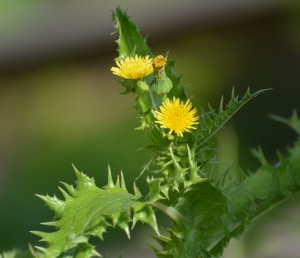
All is not doom and gloom in the spring garden. Native prairie milkweed (Zizotes) Asclepias oenotheroides, is waking up, pushing luscious leaves through the earth. This is a monarch butterfly host plant important in the Valley.
A potted mesquite plains milkvine, Matelea parviflora, purchased at a Native Plant Project meeting last year, draped itself over the pot all summer and then died back during the winter. Like other milkweed plants, the roots were still below the surface and true to form it’s poking up green in its rosette growth pattern.
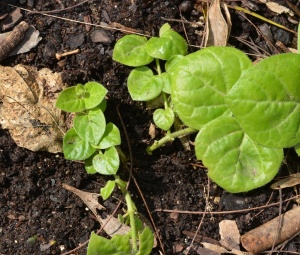
All is not without peril though. Young shoots of milkweed are tasty to aphids. These yellow parasitic creatures populate exponentially every ten minutes. Soon stems and undersides of milkweed leaves are covered with aphids sucking the life out of the green growth. If this happens, douse the stems and leaves with isopropyl alcohol. Yes, really. I have this from a trusted source. The alcohol kills the aphids and dries instantly so it doesn’t harm insects coming to nectar. (Two bottles for a dollar at Dollar Tree.) Don’t douse if ladybugs are present. Ladybugs, of course, feed on aphids and will clean up the infestation eventually.
Orange and black beetles Oncopeltus fasciatus, known as the large milkweed bug, are attracted to milkweed plants. I flick them off then step on the beetle. Other recommendations: pluck them off and squash, or drop in a pail of soapy water. These beetles will harm the plant. The female can lay two thousands eggs in one month.
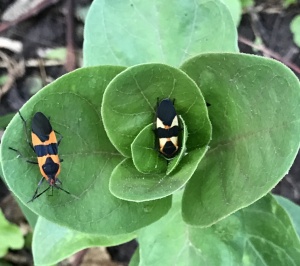
All said, it’s glorious to begin a new spring and discover even the tiniest of flower, like the straggler daisy, Calyptocarpus vialis — Mother Nature’s favorite void filler. (PDST page 90.)
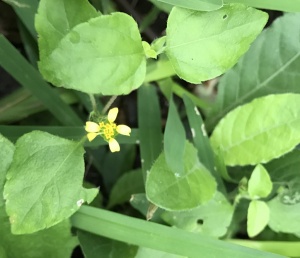

Leave a Reply